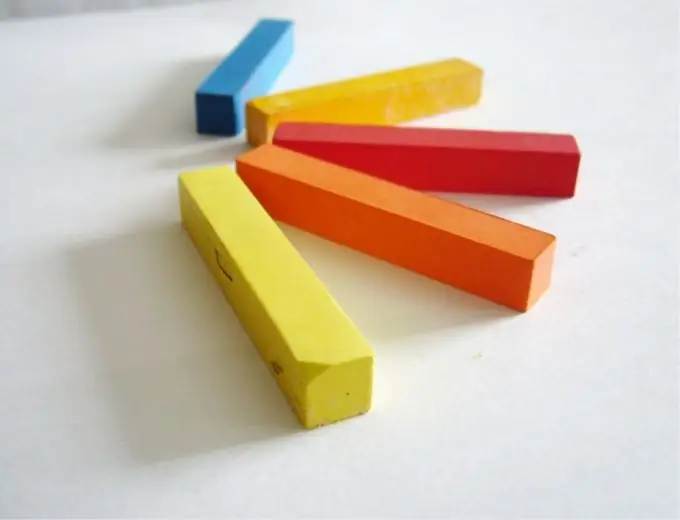Pastel allows you to convey very subtle overflows of shades, and this is its main charm. This technique is especially good for landscapes, still lifes and portraits. The drawing seems delicate and airy. It is convenient to draw with pastels. It is produced in the form of crayons. Sharp edges can be used to draw fine lines. The pastel is perfectly grinded, which allows you to get unusual color combinations.

It is necessary
- - pastel;
- - material for the base;
- - sandpaper;
- - soft eraser;
- - brush;
- - shading;
- - retainer;
- - knife;
- - frame with glass.
Instructions
Step 1
Choose a pastel. It can be oily, waxy or dry. Each has its own advantages. Works performed in soft (aka dry) pastels seem velvety. Wax is made from wax and pigments, and mineral oil is added to oil. These two types of pastels are considered hard and give brighter and richer colors than dry ones.
Step 2
Prepare the base. For small drawings, you can use the finest sandpaper. Pastel looks very good on suede. For the base, use ordinary Whatman paper, paper or cardboard with a small, but pronounced texture. Watercolor paper will work. The texture is necessary because it holds the small particles of the pastel. Cut the sheet to the size you want. Pastels can be painted both on an easel and on a table. It depends on how seriously you decided to take up this type of painting and what equipment you have already acquired.
Step 3
Compose your future work in your mind. If this is your first time using pastel crayons, sketch in a very thin pencil. It is needed in order to determine the proportions and location of each color spot. The pencil sketch should be barely visible. Better to make a sketch and sharpened chalk, especially if you already have some drawing experience.
Step 4
Draw the outline of the design with a sharpened crayon. Draw outlines for the color spots. Spread the paint over the desired area of the surface. Apply pastel powder over large areas. It turns out if a piece of crayon is rubbed with sandpaper or finely cut with a knife. The paints mix well, and this makes it possible to obtain almost any color combinations and transitions. You can shade the surface with long lines, much like you would with a pencil. The difference is that you don't have to press the pastel crayon at all. It is very fragile, it fits on paper even with a light touch.
Step 5
After you have covered the entire surface with the main tone, draw the details in thin lines. In this case, you can also use sharpened pastel chalk.
Step 6
Do not be discouraged if you drew the wrong line or if you are not satisfied with the color that came out. The pastel drawing can be adjusted using the most common soft art brush. You should have brushes of different thicknesses on hand. The exact same brushes are used for painting with watercolors or gouache. You can also correct the work with a soft eraser with a very fine texture.
Step 7
Pastels peel off easily, so the drawing must be fixed, even if you painted on suede or sandpaper. There is a special retainer sold in art stores. But you can use any hairspray, you need very little of it. It is enough to lightly spray it once or twice.






